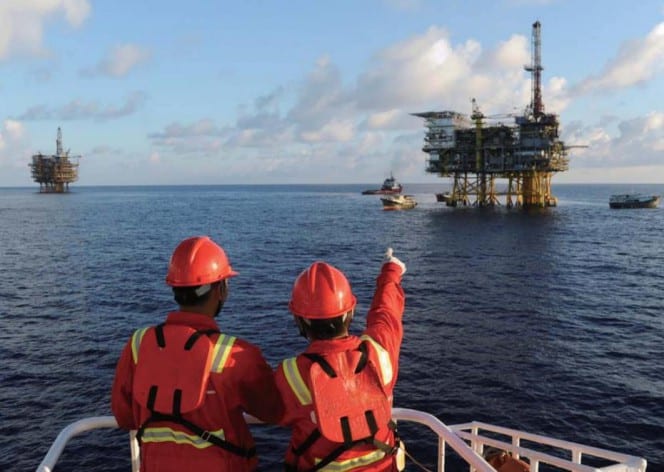(S&P Global Platts) China’s offshore giant CNOOC targets to lift its oil and gas output by 6% on the year to 1.66 million boe/d in 2022, with most of its effort to go into boosting domestic production, CFO Xie Weizhi said in a press conference late Jan. 11.
“The company’s 2022 production target is 600-610 million boe, compared to about 570 million boe estimated produced in 2021. Output from China will account for 69% of the total [global] production, up from 68% in 2021,” Xie said.
CNOOC has been the top contributor to China’s crude output increase. CNOOC’s domestic crude output rose 11.5%, or 24.1 million barrels, on the year in January-September 2021, contributing to over 85% of the country’s output increment, company results and data from China’s National Bureau of Statistics showed.
CEO Xu Keqiang said that the company’s domestic crude output is estimated to peak at 60 million mt/year (about 1.2 million b/d) in 2030 while natural gas was set to peak at 40 Bcm/year in 2035, and the peak volumes would be sustainable for a few years.
CNOOC produced 857,000 b/d of crude and 9.86 Bcm of natural gas at home in the first nine months of 2021, according to company results.
To meet its production goals in 2022, CNOOC scheduled 13 new projects to come onstream during the year. Of these, 10 domestic projects will contribute 119,497 boe/d of peak production, while those in Brazil, Guyana and Indonesia would contribute 85,020 boe/d of peak output to CNOOC, according to the company’s 2022 strategy released during the press conference.
The domestic ones include three onshore unconventional coal bed methane and tight gas projects, combined peak output of which is 18,100 boe/d or 3.05 Mcm/day.
Xu said the company had stepped up unconventional gas development and the output in 2021 exceeded 3.5 Bcm, adding that it would reach 6-8 Bcm/year in 2025.
The proportion of domestic to global production is expected to decline to 65% in 2023 and 2024, when CNOOC targets to produce about 645 million boe and 685 million boe, respectively, according to the 2022 strategy.
Capital expenditure
To sustain the output growth, CNOOC targets to spend Yuan 90-100 billion ($66.64 billion-$74.05 billion) in 2022, compared to about Yuan 90 billion in 2021, Xie said.
CNOOC will invest 73% of its budget in China, while 57% of its capital expenditure would go into upstream development.
The company targets to spend 5%-10% of its budget in new energy businesses by 2025, leading with offshore wind power, developing onshore wind power and photovoltaic integration projects, Xie said.
The company aims to acquire 5-10 GW offshore wind power resources, 5 GW onshore wind and solar power resources, Xie added.
CNOOC has also been investing in cutting emissions.
Among its new domestic projects to come onstream in 2022, the Kenli 6-1 Oilfield Block 5-1, 5-2, 6-1 Project and the Kenli 6-1 Oilfield Block 5-1, 5-2, 6-1 Project have been connected to the onshore grid. This is so they can rely on onshore power supply with higher energy efficiency instead of having to generate power by themselves offshore.
The company’s Kenli 6-1 Oilfield Block 5-1, 5-2, 6-1 Project is China’s first offshore CCS demonstration project to re-inject associated CO2.



